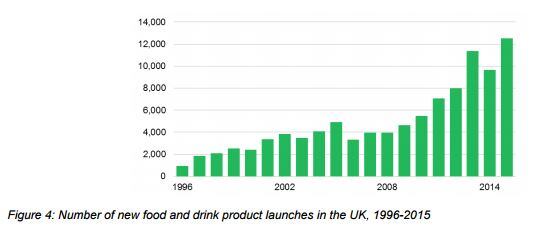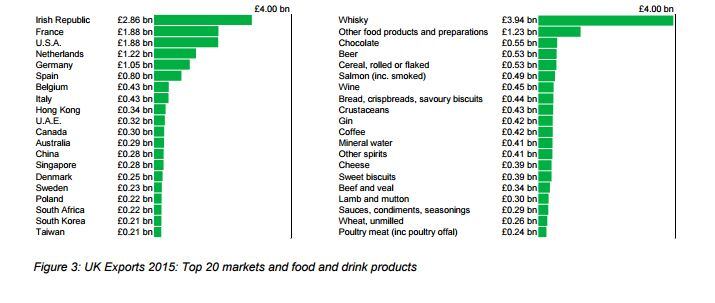The infographic report by the Department for Environment, Food and Rural Affairs (DEFRA) gives a snapshot of the British farming and food sectors, worth £25.8 billion (€32.9 bn) and £26.9 bn (€34.3 bn) in 2014 respectively.
“Our food industry is highly innovative,” says DEFRA, citing Mintel data that clocked up a 30% increase in new product launches between 2015 and 2014.

But although the London Stock Exchange Group recently predicted a healthy yearly growth rate of 3-4% for the UK’s food manufacturing and processing industry, uncertainties are looming, especially as the referendum on Brexit – the UK’s exit from the European Union – nears. Scheduled for 23 June, the country’s production to supply ratio has been put put under the microscope.
According to DEFRA, the UK is 76% self-sufficient in home grown food. “We rely on imports for the things which cannot be grown in the UK due to our climate,” it says. “A diverse and global supply of food is essential for the resilience of our food supply: achieving 100% self-sufficiency in indigenous products would not insulate us from shocks to the system – for example, weather and disease can affect the harvest and yields.”
But these figures are disputed by a recent report by the Food Research Collaboration, claimed that the UK was only 60% self-sufficient in food. Authors, Professor Tim Lang and Dr Victoria Schoen, warned that the UK’s reliance on imports from the EU could lead to a hike in food prices should the country quit the EU. Currently, around 55% of Britain’s supply of pigmeat and 40% of its total supply of fruit and vegetables come from other EU countries.

According to government revenue and customs figures, all of the top ten countries for British exports in 2015 were EU member states bar three – the USA, Hong Kong and the United Arab Emirates.
Iconic British brands
While a large body of research which shows that price is the single biggest factor in consumers’ purchasing decisions, there are many other factors which come into shoppers’ thinking, says DEFRA, such as the provenance and origin of food and the visual attractiveness of products.
Protected origin status (PDO), aimed at sustaining the competitiveness and profitability of European foods and protecting them from imitations, therefore helps to raise awareness of the provenance of British food products, says DEFRA. Although southern countries, such as Italy and France dominate, the UK currently has 73 PDO labels in total, including Kentish ale, Melton Mowbray pork pies, Scottish wild salmon or Stilton cheese.
According to Elsa Fairbanks, director of The Food and Drink Exporters Association (FDEA), foreign markets are particularly attracted to British products in certain categories. "Buyers continue to be attracted by the quality and innovation of British products. Growth is particularly coming from products where the UK excels - iconic British brands combined with our expertise in health, well-being and free-from,” she said at the release of UK trade figures last month.
But the popularity of buying British is on the rise at home as well. A survey by Mintel found that over half (55%) of British shoppers try to buy domestic food when possible while 39% think British food tastes better. This demand for domestic products across nearly all categories is being fuelled by the over-65s, with 74% of older consumers saying they opt for British food at home compared with one third (37%) of younger consumers.
